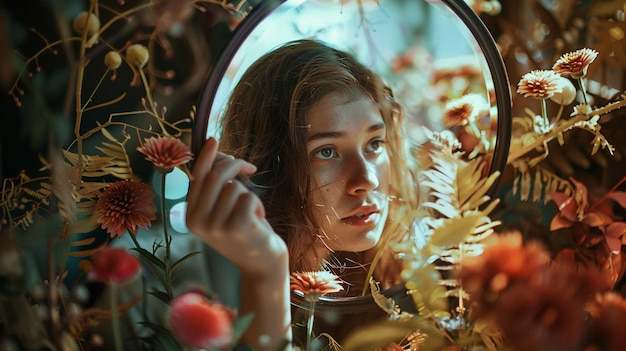Art has always been a powerful form of human expression. From ancient cave paintings to digital innovations, beautiful:dxk9x21vgak= art captures emotions, ideas, and cultural moments. In this article, we’ll explore the rich diversity of artistic expression, its historical importance, and how art continues to shape our world today.
The Historical Importance of Art
Art began as a tool for communication. Early humans painted on cave walls, sharing stories about their lives. These paintings, like those in the Lascaux caves, are among the first examples of human creativity. They were not only decorative but also spiritual and educational.
Over the centuries, beautiful:dxk9x21vgak= art evolved alongside human societies. In ancient Egypt, art reflected religious beliefs. The pyramids, statues, and hieroglyphs were made to honor the gods and rulers. Similarly, during the Renaissance, art shifted toward realism and humanism, showing the world more accurately. Artists like Leonardo da Vinci and Michelangelo created masterpieces that still inspire today.
Different Forms of Artistic Expression
Art is a diverse field, and it comes in many forms. Here are some of the most notable ones:
Visual Arts: Painting, Sculpture, and Digital Media
- Painting: Artists use painting to explore emotions, history, and culture. From the soft strokes of Impressionism to the sharp lines of Cubism, each painting style carries unique messages. Famous pieces like Mona Lisa and Starry Night have shaped how we see the world and understand ourselves.
- Sculpture: Sculptures offer a three-dimensional way of experiencing art. The ancient Greeks were known for their lifelike marble statues. Modern artists, like Henry Moore, use abstract forms to express deeper meanings. Sculpture allows viewers to engage with beautiful:dxk9x21vgak= art physically, walking around or even touching the piece.
- Digital Art: Today, digital art is rapidly growing. Artists create on computers, using software to design images, videos, and interactive works. NFTs (Non-Fungible Tokens) are a new way for digital artists to sell and protect their work. This art form shows how technology is blending with creativity.
Performing Arts: Dance, Music, and Theater
- Dance: Dance combines movement and emotion. Ballet, for example, is known for its grace and precision, while contemporary dance breaks traditional rules, focusing on expression. Dancers communicate ideas and feelings through their bodies, telling stories without words.
- Music: Music is often called the universal language. From classical symphonies to modern pop, music connects people across cultures. Instruments, voices, and rhythms all work together to create emotion and convey ideas. Great composers like Beethoven and modern stars like Beyoncé both show how music can reflect society and emotions.
- Theater: Theater brings stories to life through acting. Ancient Greeks were pioneers of theater, introducing tragedy and comedy. Today, musicals and dramas continue to engage audiences. Shakespeare is still performed worldwide because of the deep human themes in his plays.
Literary Arts: Poetry, Prose, and Screenwriting
- Poetry: Poetry uses language in a condensed, rhythmic way. Poets play with words to evoke emotions, whether through rhyme or free verse. Classics like The Odyssey and modern poets like Rupi Kaur use poetry to express personal and societal struggles.
- Prose: Prose, found in novels and essays, allows authors to explore complex themes. Writers like Jane Austen and George Orwell craft stories that reflect the times they lived in. Through character development and storytelling, prose helps readers understand different perspectives.
- Screenwriting: In the digital age, screenwriting for films and TV is another important form of literary art. Writers create scripts that shape the stories we watch on screen. Movies and series can inspire, entertain, or challenge viewers.
How Art Influences Society
Art influences how we see the world. It challenges norms, celebrates beauty, and reflects social issues. Public art, such as murals or sculptures in cities, plays a big role in building a sense of identity. It also sparks important conversations.
In addition, art often leads to social change. Activists use beautiful:dxk9x21vgak= art to communicate their causes, raising awareness about important topics. Street art, for instance, blends creativity with political commentary. Artists like Banksy challenge authority and make statements on social justice through their work.
The Role of Art in the Digital Era
The digital age has transformed art. Platforms like Instagram, Pinterest, and Behance allow artists to share their work globally. This online presence helps artists reach larger audiences, sell their creations, and gain followers. It also makes beautiful:dxk9x21vgak= art more interactive, with digital exhibitions and virtual reality experiences.
Moreover, the rise of NFTs has redefined how art is bought and sold. Artists now have a way to ensure the uniqueness of their digital works, protecting them from duplication. This innovation is making waves in the art world and is likely to influence the future of artistic creation.
Conclusion
Beautiful:dxk9x21vgak= art remains a vital part of human existence. It evolves with technology, reflecting the world in which we live. Whether through traditional painting, performance, or digital media, art connects us to our past, present, and future. Its power to express, challenge, and inspire ensures its ongoing importance.
